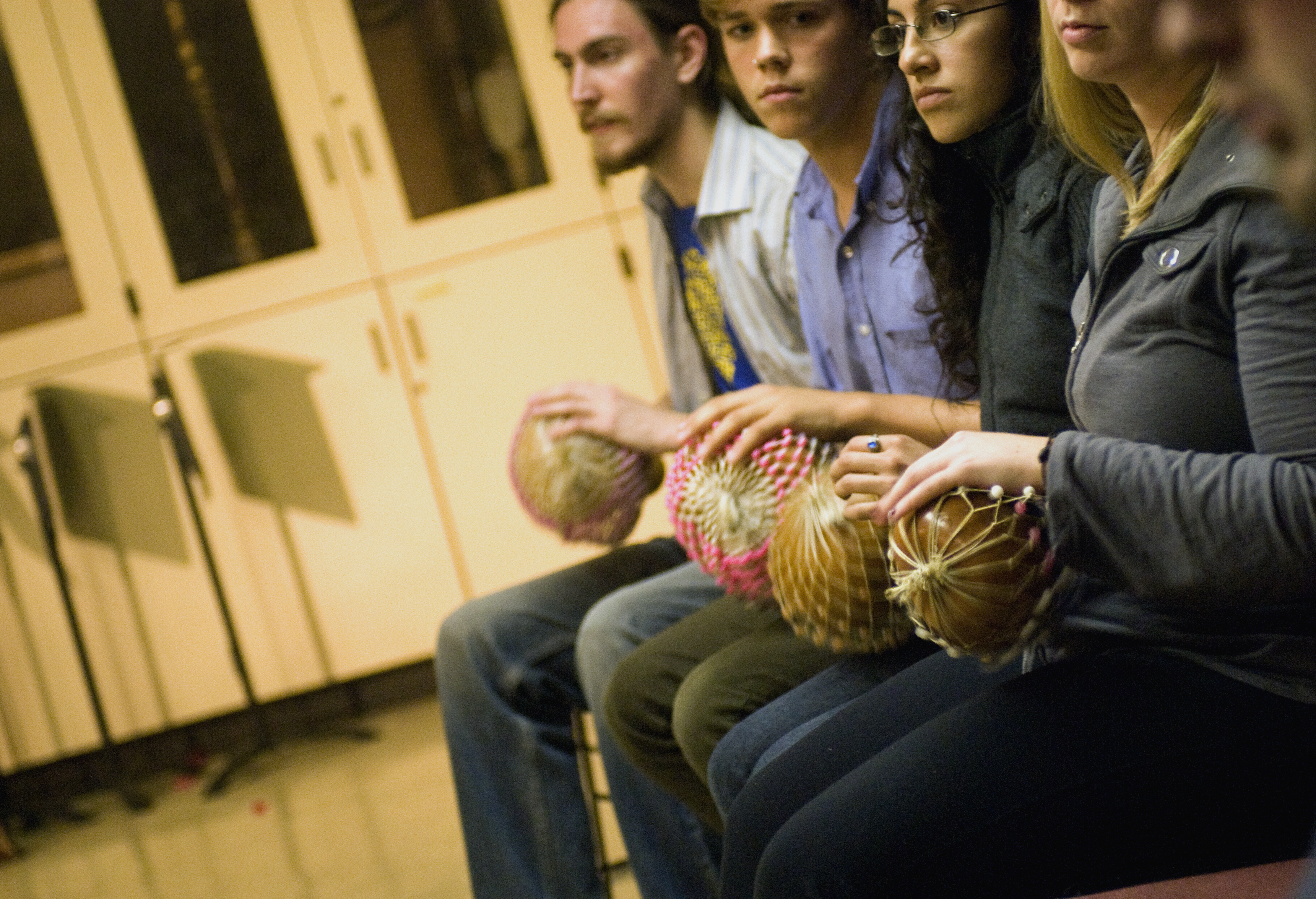There is an old Zimbabwean proverb that says, “If you can talk, you can sing. If you can walk, you can dance.” UCLA’s Music of West Africa Ensemble takes this saying to heart.
The West African ensemble performs the traditional music and dance of the western region of Africa, encompassing countries such as Ghana, Togo, Benin and Nigeria.
“It varies from country, but basically, West African music uses lots of percussion,” said Kobla Ladzekpo, ensemble director since 1976.
The ensemble’s instrumentation reflects the traditional culture of West Africa. The central bell, called the gankogui, keeps the beat of the music. The lead drum, called the atsimevu, is backed by three support drums called the sogo, the kidi and the kagan, all of which play contrasting but complementing rhythms. The music also features rattles, called axatses, and traditional West African vocals. The music of West Africa includes much call and response and allows for a great deal of improvisation.
However, the instrumentation and music of the ensemble is only half the story. In West Africa, dance is an integral part of music; where there is music, there is dance, and vice versa.
“Our music is not for listening, it is for dancing,” Ladzekpo said.
For this reason, all of the ensemble’s performances also include traditional West African dance. Just like the music, West African dance has basic set movements but allows the performers to embrace their individuality.
The ensemble’s approach to performance stresses that anyone can play a part in creating music.
The members of the West African ensemble are from a wide range of backgrounds, but they all come together to find harmony and unity in performing such a community-oriented brand of music.
